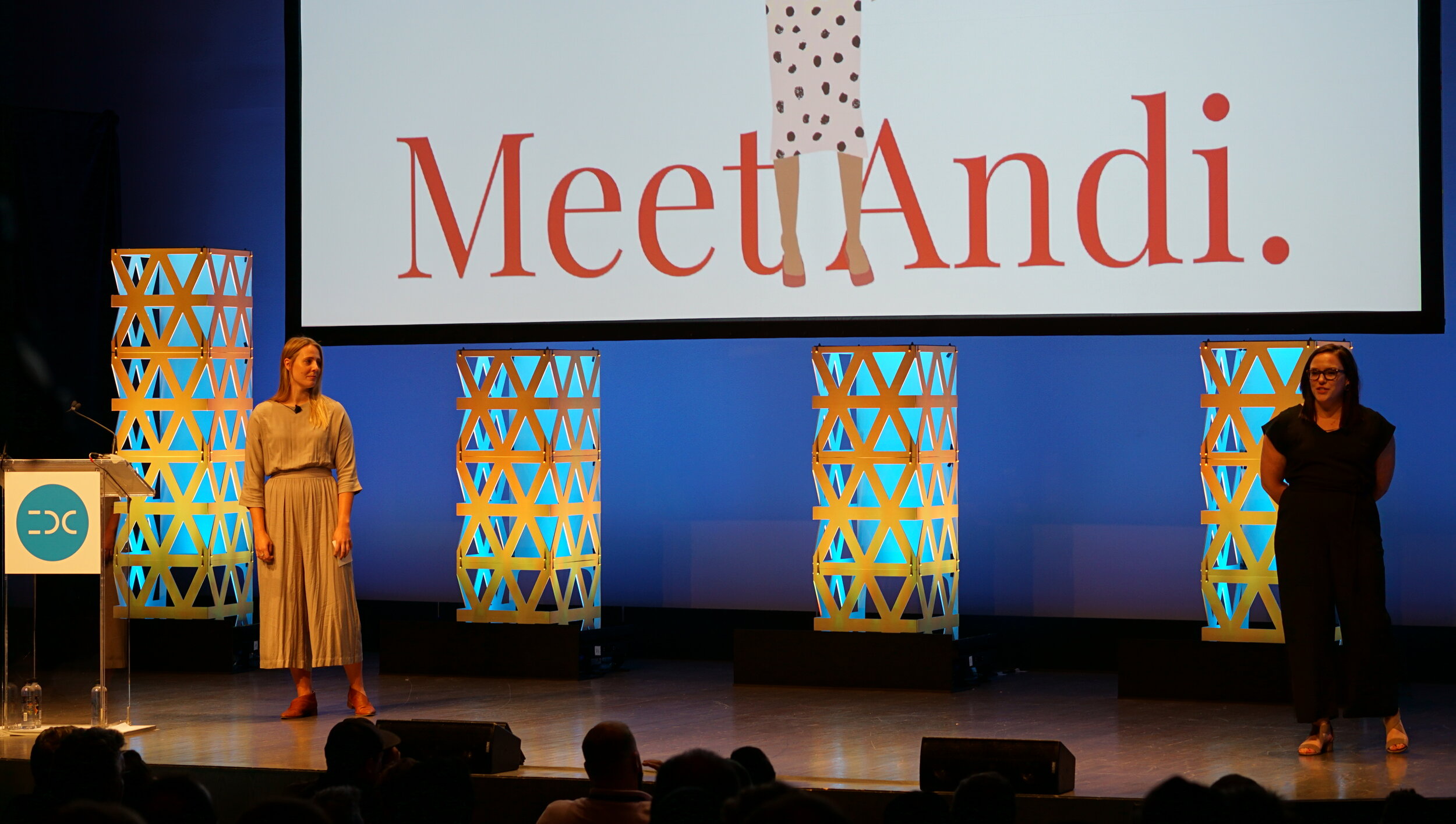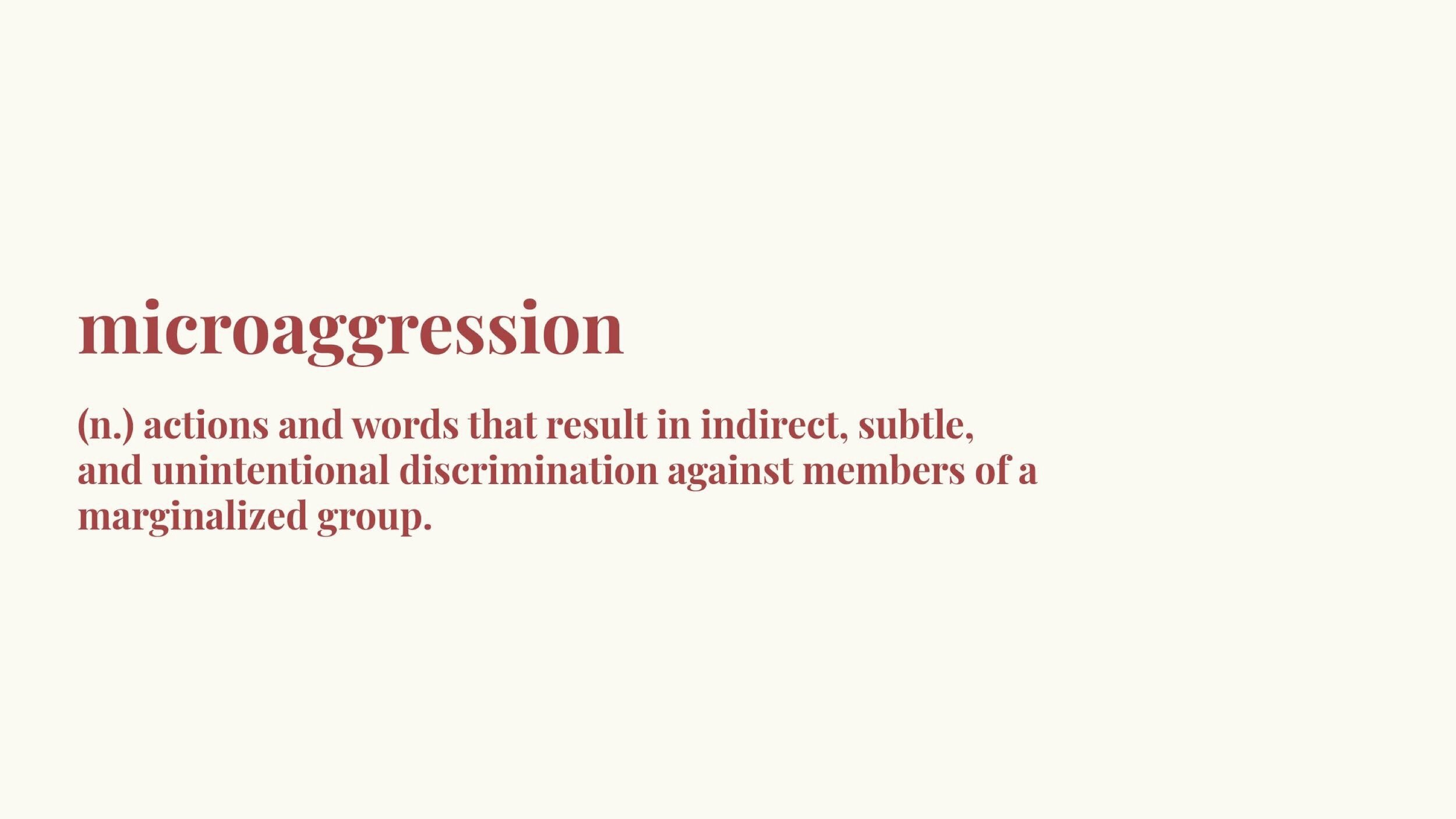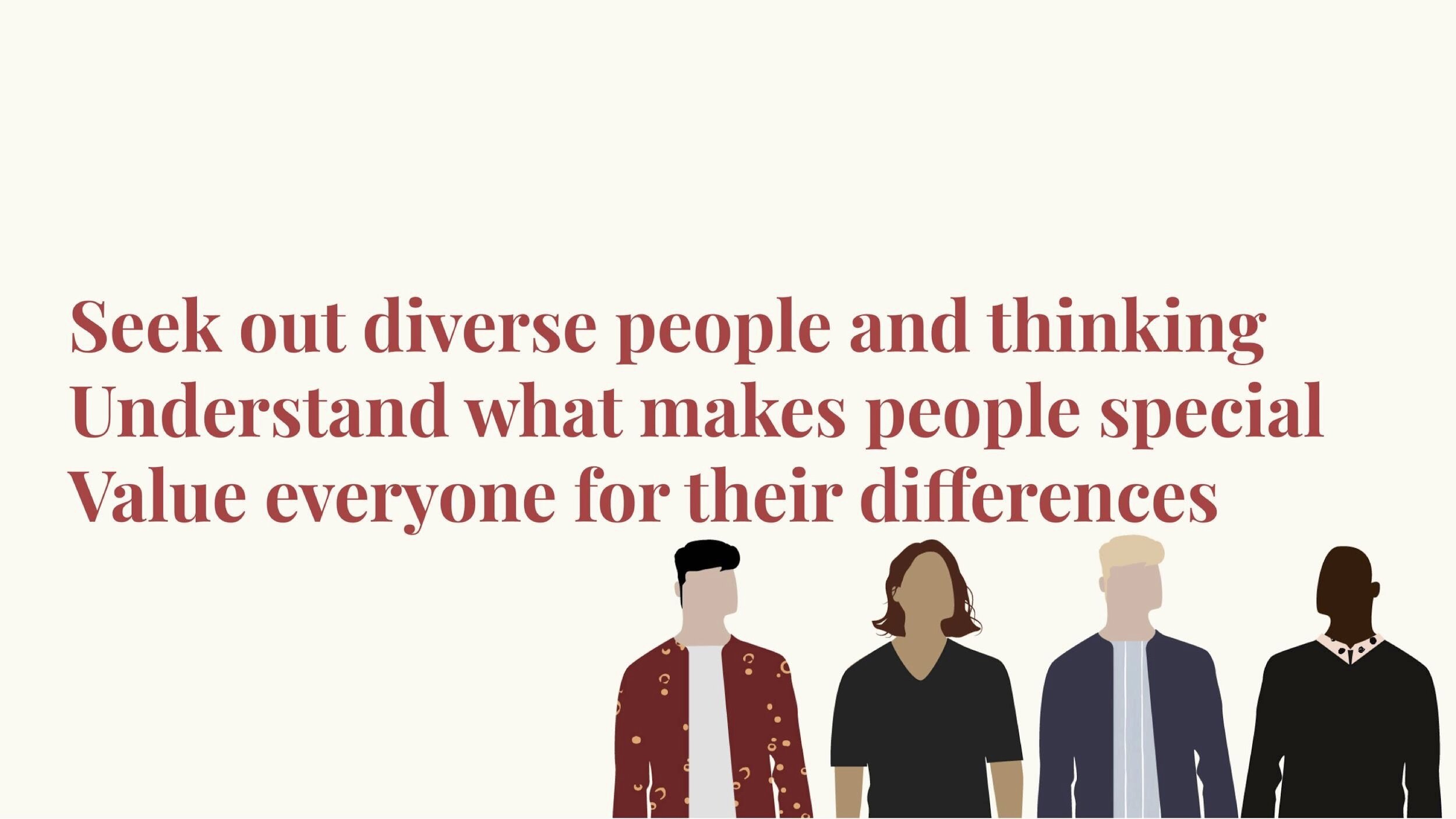IDC 2019 Recap
The International Design Conference, put on by IDSA every year, is an opportunity for creatives from around the world to gather and hear talks by and participate in workshops from both seasoned design veterans as well as bold newcomers. This year, we had the honor of representing Women in ID Chicago and presenting alongside some of these amazing designers.
Our talk, entitled “How to Lose your Female Designer in 10 Days,” told the inspired-by-true-events story of a woman named Andi during the first two weeks at her new job as a senior designer. Over the course of her first ten days, Andi’s expertise is challenged, she is singled out from her team, and she is made to feel like her opinion doesn’t matter and her voice isn’t being heard. However, part of the problem Andi encounters is that her coworkers don’t even realize that the comments they’re making are a problem. They’re so subtle and subconscious that her coworkers don’t understand why she’s upset by them. But for Andi, they’re devastating, discouraging, and demeaning, each comment piling more on top of the previous. The things that Andi faced in our story are not uncommon. These things actually have a name, they’re called microaggressions. By definition, microaggressions are subtle and often unintentional comments and actions that stem from societal stereotypes and subconscious biases that result in discrimmination against a marginalized group. These microaggressions often lead to negative workplace culture, women leaving their jobs and the design industry, and they continue to perpetuate this negative thinking in our culture.
Luckily for the IDC audience, and all of you reading this now, we have three simple things that you can do, regardless of who you are, in order to make your workplace more inclusive for everyone and make you a better designer.
Number 1: Question stereotypes.
When Andi’s coworkers do things like continuously ask about her dating life, or ask when she’s planning to have kids, they’re reinforcing unfair stereotypes. Now we know you can’t just quit stereotyping cold turkey because frankly, it’s impossible. But the least we can do is show our peers the same openness and curiosity we approach design problems with. Get to know your team and what makes them unique, just as you get to know your users. One of the biggest things we need to be aware of as designers is our role in creating and perpetuating stereotypes. The decisions we make and the things we put into the world have a direct effect on people and culture, so it’s our responsibility to be conscious of our own biases and recognize the impact our choices make. Find yourself an accountability buddy, either in your workplace or friend circle, or both, and help hold each other accountable when your stereotypes get the better of you, both in the workplace and in your designs.
Number 2: Seek diversity.
When Andi’s boss routinely calls out the fact that she’s a female or her coworkers comment on her outfits, it just reiterates to Andi that she’s different. There’s a lot of diversity in our community, but how well is that diversity represented on your design teams? We’re going to challenge you to break the silo and seek out diverse thinking. You don’t have to be the person resourcing the project or assigning the team to proactively seek out diversity. It’s our job as designers to understand what makes someone special and value them for that. Start by getting to know your coworkers. Find out what makes them unique and encourage them to bring those skills and personality traits into the office. And if don’t have enough diversity on your team, go outside your team or even your office and find it. It’ll make you better and it’ll make your projects better.
Number 3: Build great relationships.
When her coworkers cause Andi to question her standing on the team or when her boss only puts her on projects that align with her strengths rather than helping to grow her weaknesses, they’re expressing their lack of confidence in her skills and causing her to doubt her own competency as well. In our experience working in the Midwest, there are very few women above a certain age still working in the design industry and holding leadership roles. One reason women leave the industry is because they don’t receive the support everyone needs to grow in their careers. And it starts with recognizing and embracing that you need to develop people’s weaknesses as much as you need to empower their strengths. Have a constructive conversation around growth, recognize that it’s a journey that takes time, and provide support throughout that journey by building relationships. Humanize your coworkers the same we humanize the people that will be using our products. Everything we do is about people and when you’re talking about people it all comes back to relationships, the foundation of which is invested time, mutual respect, constructive feedback, and understanding and appreciating different communication styles. Develop relationships that allow you to learn from each other, grow from each other, and support each other.
Introducing the audience to Andi.
Based on an informal poll on our Instagram, 84% of our followers have experienced a microaggression in the workplace and 78% felt like the issue wasn’t resolved.
Defining a microaggression.
Tips to help you question your stereotypes.
Ways to help you seek diversity.
Here’s how you can start to build great relationships with your coworkers and peers.
We hope you’re able to take some of these tips back to your office and that you can start to design your team with the same diversity you see around you every day.
If you’d like to hear our full talk or see some of the other amazing presentations from IDC 2019, check out this webpage: https://www.internationaldesignconference.com/videos
*Note: all illustrations were created by WIID co-founder Mallory Evans. All the content and graphics belong to Women in ID Chicago.





